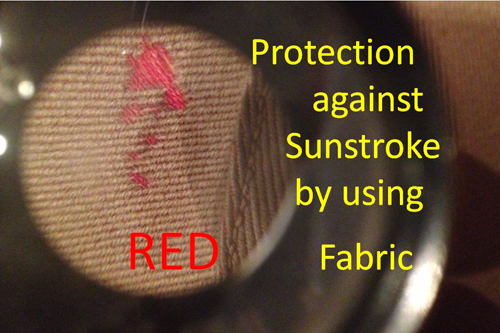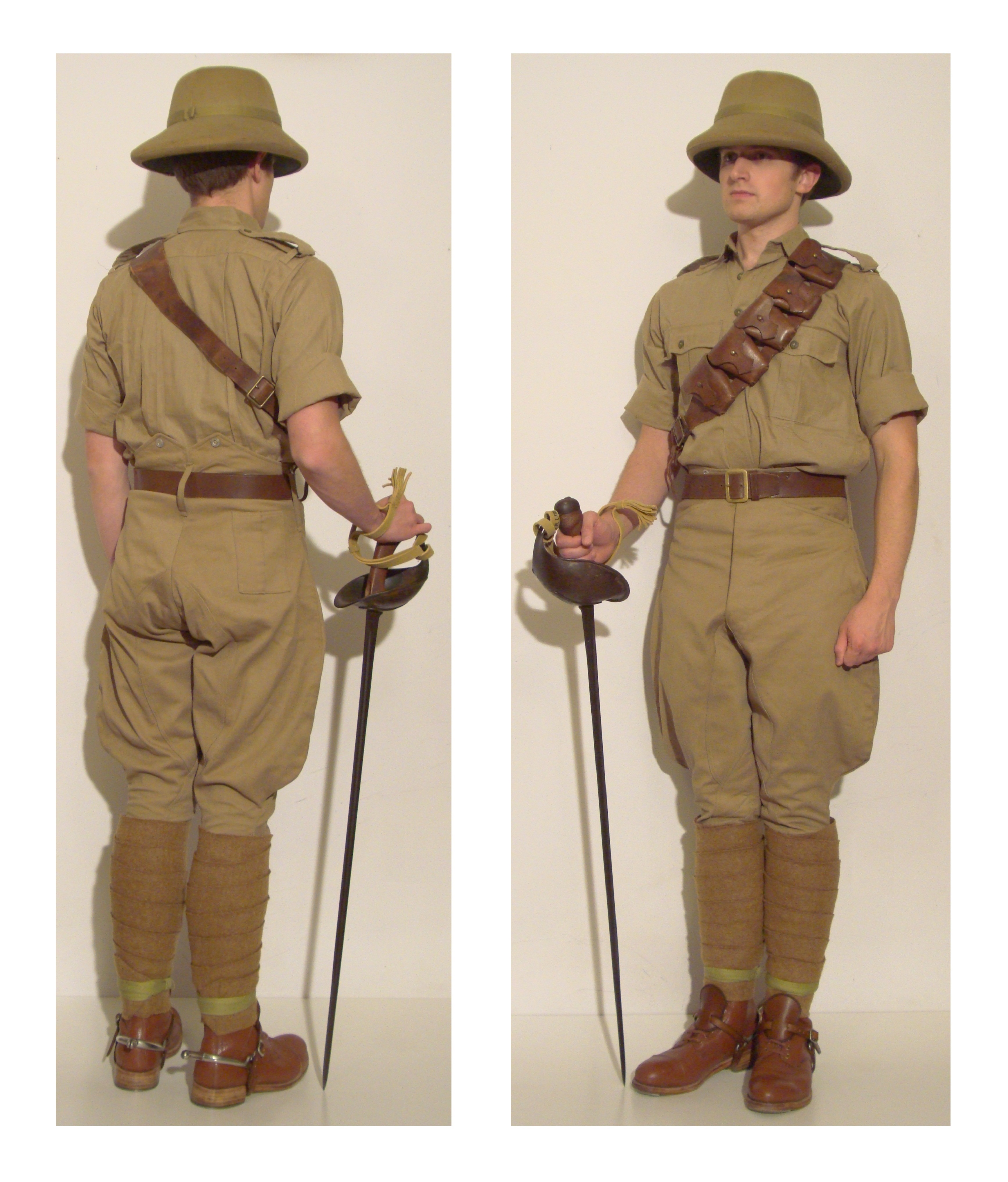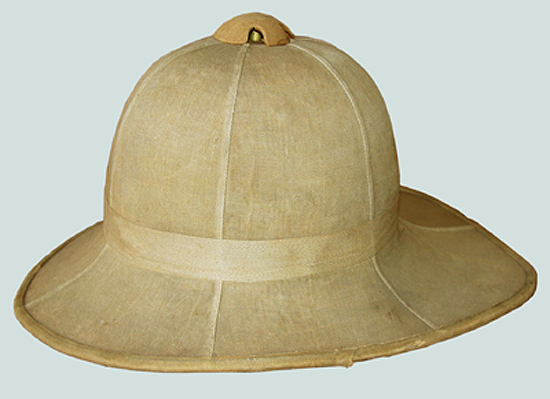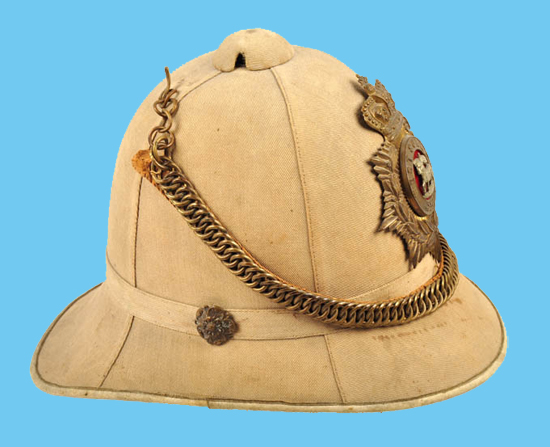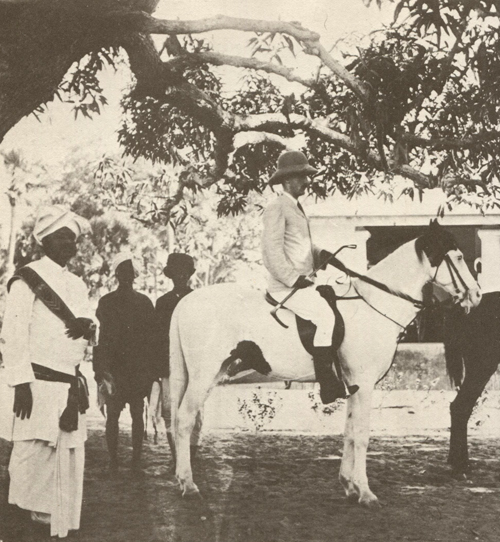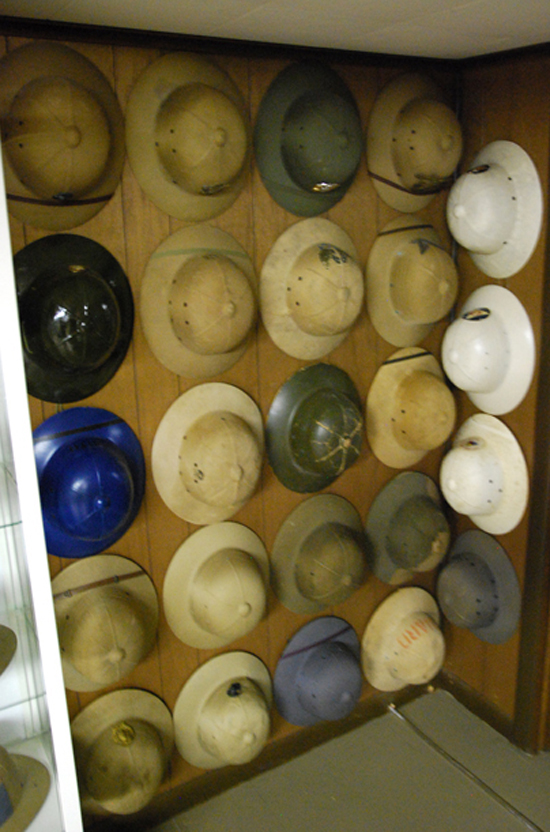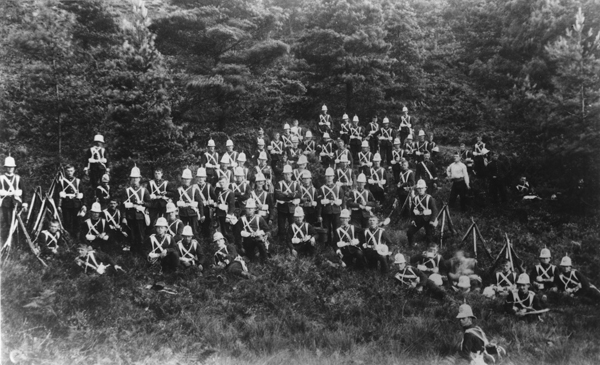
1st Battalion Northamptonshire Regiment c1892 wearing experimental helmets developed in the late 1880s. (Photo courtesy Michael Barthorp)
Since being introduced into the British Army in the late 1870s several problems with the Colonial pattern helmet prompted a search for a replacement. Those problems were; the rear of the helmet forcing the front peak down thereby making firing a rifle in the prone position difficult, and the lack of sun protection to the temples. There are many period photographs showing the helmets being worn back to front to provide better sun protection to the eyes although, therefore, exposing the neck. Continue reading

